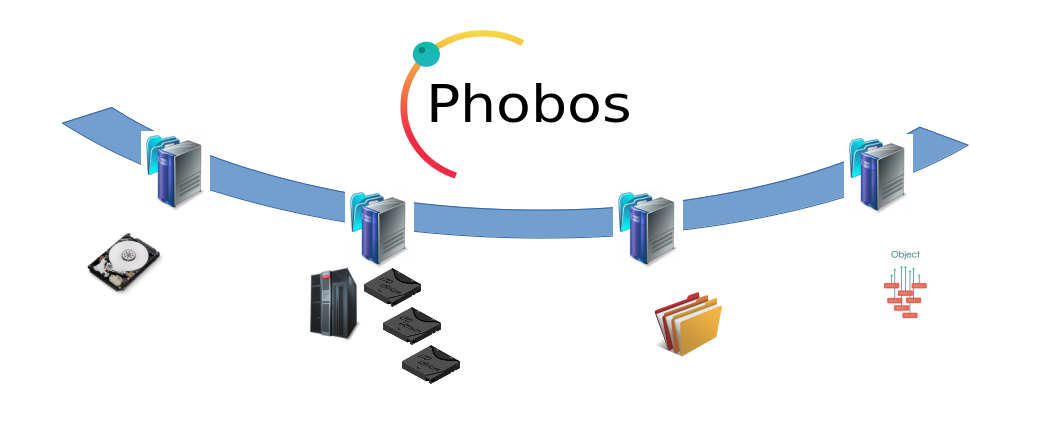-
Notifications
You must be signed in to change notification settings - Fork 8
Home
Yoann Valeri edited this page Jul 22, 2025
·
3 revisions
Phobos, standing for Parallel Heterogeneous OBject Store, is a tool designed to manage large volumes of data for various kinds of storage technologies from SSD to tapes. Phobos can efficiently handle very large datasets on inexpensive media without sacrificing scalability, performance, or fault-tolerance requirements.

Phobos is designed to allow the easy integration of new modules for layouts such as mirroring and erasure coding or I/O adapters.
Phobos is distributed under the GNU LGPL Licence.
- Object storage using CRUD-like operations
- Designed primarily for magnetic tapes, but extended to POSIX filesystems, RADOS, etc.
- System metadata stored in PostgreSQL database
- Optimized access scheduling
- Fault-tolerance mechanisms
- How to install Phobos and setup the related tools
- Get started with Phobos using simple examples
- Understand the Phobos' configuration
- Check the store commands and the admin commands
- For a more advanced usage of Phobos, including commands, concepts or configuration
- If you have questions and need answers, check the Troubleshoot
- To get familiarized with Phobos and exercise yourself, check the Examples and exercises
- If you are a developer and want to start contributing to Phobos, see the Developer Quickstart
- For more information about where Phobos can be used and with which front-end, check the Front-ends
- Finally, check the Roadmap section for information about our next development plans, but also, if you want to understand some of our design choices and plans, check the
docdirectory in the source tree, which contains various documentation on the configuration format and design.